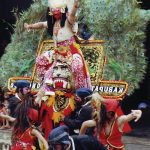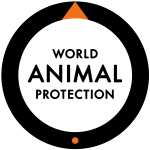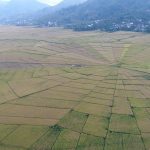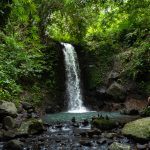Komodo dragons have long captured the world’s imagination with their imposing size and fearsome reputation. These ancient reptiles, found only on a handful of Indonesian islands, are shrouded in myth and legend. Join us as we explore the fascinating facts about Komodo dragons, debunk common misconceptions, examine conservation efforts, and take a look at how tourism has developed in their habitat, including the role of organizations like Wicked Adventures and our Non-Profit in conserving these remarkable creatures.
The Komodo Dragon: An Overview
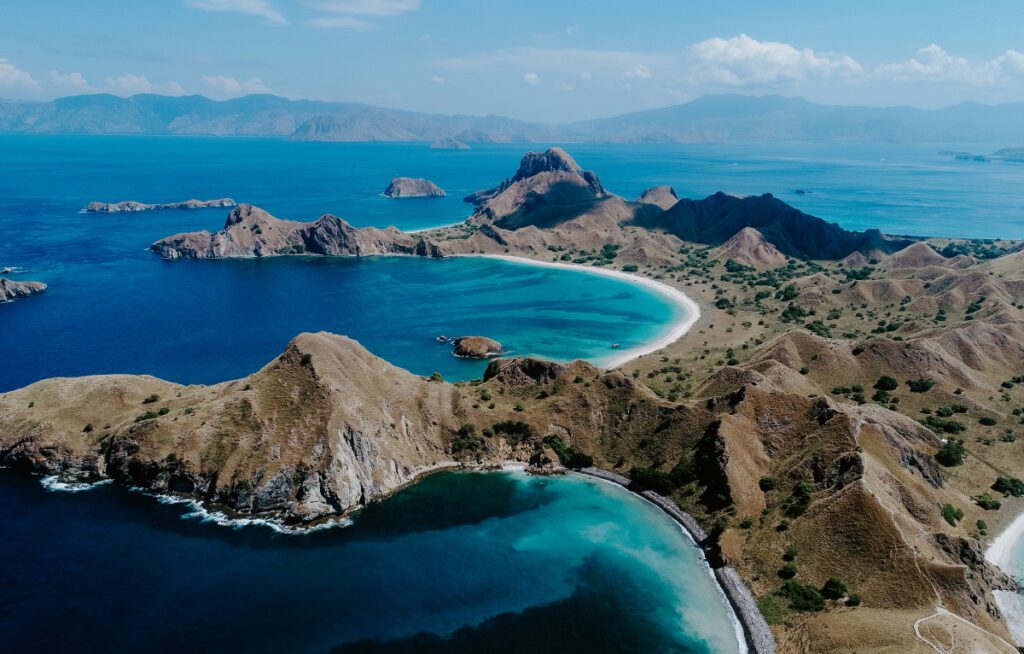
Komodo dragons (Varanus komodoensis) are the world’s largest living lizards. They can grow up to 10 feet (3 meters) long and weigh up to 330 pounds (150 kg). These impressive reptiles are found only on a few Indonesian islands, primarily Komodo, Rinca, Flores, and Gili Motang. There are frequent stories about them being spotted in other nearby locations – though these often prove to be the smaller (but still impressive) Mangove Monitor Lizards.
Facts About Komodo Dragons
Ancient Origins
Komodo dragons have roamed the Earth for millions of years. Fossil evidence suggests that they evolved in Australia and spread to Indonesian islands. They are also a very good
Crazy history from a crazy dragon
Komodo dragons are often used as an example of something called “island gigantism.” This is part of a broader idea called the “island effect” or “Foster’s rule.” Basically, this rule suggests that when animals from the mainland end up living on islands:
- Small animals tend to get bigger
- Big animals tend to get smaller
This happens because islands have different environments and challenges compared to the mainland.
The Case of the Komodo Dragon
Komodo dragons are the biggest lizards alive today. They can grow up to 10 feet long and weigh up to 150-200 pounds. At first glance, they seem like a perfect example of island gigantism – a lizard that got super-sized on an island.
But here’s where it gets interesting:
- Scientists found fossils of an even bigger lizard that lived in Australia a long time ago. This ancient lizard was about 23 feet long and weighed over 1,300 pounds!
- Some researchers think Komodo dragons might have evolved from this bigger lizard!
So, in a twist, Komodo dragons might actually be an example of island dwarfism – they got smaller on the islands, not bigger!
Why Do Animals Change Size on Islands?
Several factors can cause animals to change size on islands:
- Less danger: Fewer predators might allow animals to grow larger.
- Less competition: With fewer species around, animals might have more food and space to grow.
- Different food sources: Animals might need to change size to eat what’s available on the island.
For Komodo dragons, being big helps them hunt large prey like deer and water buffalo.
Quick Changes and Risks
Animals can change size pretty quickly on islands – sometimes in just a few thousand years. However, this can also make them more vulnerable. Island animals that have changed size a lot (whether bigger or smaller) are at higher risk of extinction, especially due to human activities.
In conclusion, while Komodo dragons are often thought of as giants that grew big on islands, their story might be more complicated. They show us how living on islands can change animals in surprising ways.
Unique Venom
Contrary to earlier beliefs and online posts, Komodo dragons do possess venom glands. Their venom contains anticoagulant proteins that prevent blood clotting and induce shock in their prey.
Remarkable Digestive System
Komodo dragons can consume up to 80% of their body weight in a single meal. Their stomachs can rapidly expand to accommodate large prey, and they can digest bone, hooves, and other tough materials.
Parthenogenesis
In a remarkable adaptation, female Komodo dragons can reproduce through parthenogenesis when isolated from males. This allows them to colonize new islands and maintain populations in low-density areas. This has been long talked about in the region, and recently documented in zoos!
Debunking Komodo Dragon Myths
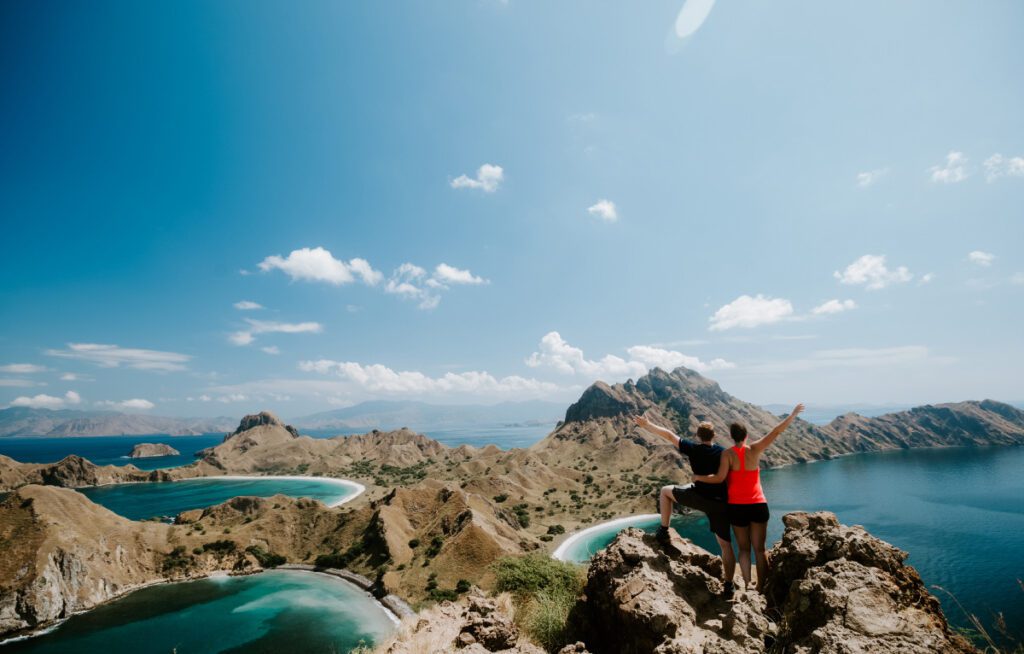
Myth: Komodo Dragons Have Toxic Bacteria in Their Mouths
For years, it was believed that Komodo dragons killed their prey through septic bites caused by toxic bacteria in their saliva. However, research has shown that their mouths are actually quite clean, and it’s their venom that plays a crucial role in subduing prey.
Myth: Komodo Dragons Are Slow and Lumbering
While they may appear sluggish, Komodo dragons can run at speeds up to 12 miles per hour (19 km/hr) in short bursts. They’re also excellent swimmers and have been spotted miles offshore. We have seen them swimming, but it is unlikeky (bordering on impossible) for them to attack while swimming, it does appeal to a primordial fear of humans.
Myth: Komodo Dragons Are Solitary Creatures
Recent studies have revealed that Komodo dragons exhibit some social behaviors, including communal nesting and cooperative hunting.
Myth: Komodo Dragons Breathe Fire
This myth likely originated from early Dutch sailors’ exaggerated reports. Komodo dragons cannot breathe or spit fire. They have bad smelling breath, but no more so than that relative who insists in on eating spicy food.
Myth: Komodo Dragons Are 7 Meters Long
Early reports greatly exaggerated their size. In reality, Komodo dragons typically grow up to 3 meters (10 feet) long. That is long enough! Witnessing them in person – well you have more than enough respect for them 🙂
Conservation Status and Threats
Komodo dragons are currently listed as endangered by the IUCN. The primary threats they face include:
- Habitat loss due to human activities and climate change
- Competition with humans for prey animals
- Occasional poaching
Conservation efforts, particularly in Komodo National Park, have had some success in protecting these unique reptiles.
Cultural Significance
Komodo dragons hold a special place in local Indonesian folklore. One origin myth states that Komodo dragons and humans have the same mother and were twins. These cultural beliefs may help support local conservation efforts. due to the complex current and historical mix of cultures that inhabit the area, there is a quite a broad selection of myths.
Notable Komodo Dragon Attacks
While attacks on humans are rare, there have been some notable incidents:
- In 2007, an 8-year-old boy was killed on Komodo Island, the first fatal attack in 33 years.
- In 2008, a group of divers was stranded on Rinca Island and had to fend off dragon attacks for two days. This tale, from personal experience, is quite magnified
- In 2009, a park ranger named Maen was attacked in his office, requiring extensive medical treatment.
These incidents highlight the potential danger of Komodo dragons, but also their normally limited interactions with humans in their natural habitat.
Komodo National Park: A UNESCO World Heritage Site
Komodo National Park, established in 1980, was declared a UNESCO World Heritage Site in 1991. The park covers not just Komodo Island but also 28 other islands, including Rinca, Padar, and Gili Motang. It’s home to approximately 2,500 Komodo dragons, representing the bulk of the world’s wild population.
The park’s establishment has been crucial in protecting the Komodo dragon and its habitat. It has also become a significant ecotourism destination, attracting visitors from around the world who hope to see these remarkable creatures in their natural environment.
Conservation Efforts: The Komodo Survival Program
The Komodo Survival Program (KSP) is a dedicated organization working to ensure the survival of what they call “The Last Dragon on Earth.” Established in 2008, this program has been at the forefront of Komodo dragon conservation for over 16 years.
Distribution and Habitat
The Komodo dragon is endemic to five islands in southeast Indonesia:
- Komodo Island
- Rinca Island
- Nusa Kode Island
- Gili Motang Island
- Flores Island
The first four islands are part of Komodo National Park. On Flores, the largest of these islands, Komodo dragons are found in three nature reserves: Wae Wuul, Wolo Tado, and Riung, located on the west and north coasts.
Conservation Strategy
The KSP emphasizes the vital need for an island-based conservation strategy to manage Komodo dragon populations in their current distribution areas. This includes both Flores and the adjacent islands within Komodo National Park.
Collaborative Efforts
The Komodo Survival Program works in collaboration with various organizations and government bodies. Their website showcases partnerships with institutions such as the Indonesian Ministry of Environment and Forestry, Komodo National Park, and several international conservation organizations.
Recent Developments
The KSP keeps track of recent news and media coverage related to Komodo dragons. Some notable recent stories include:
- A surprising report from National Geographic in September 2021 about certain tuna species no longer being endangered, which could impact the ecosystem Komodo dragons depend on.
- In June 2021, there was news about strengthening the special forces of Komodo National Park guards, highlighting the ongoing efforts to protect these creatures.
- National Geographic featured an article in July 2020 titled “Dreaming of dragons? Here’s where they really live,” promoting awareness about Komodo dragon habitats.
Addressing Human-Dragon Conflict
The program also addresses issues of human-dragon conflict. In July 2019, Mongabay reported on Komodo dragons entering settlements in East Manggarai, demonstrating the ongoing challenges of human-wildlife coexistence in the region. Check your Komodo dragon facts
Tourism Impact
The impact of tourism on Komodo dragons is a concern for conservationists. In November 2019, Science magazine published an article questioning whether tourism is endangering these giant lizards, highlighting the delicate balance between conservation and eco-tourism.
Research Insights
Recent research has provided new insights into Komodo dragon behavior:
- A study featured in National Geographic in November 2018 revealed why Komodo dragons don’t stray far from home.
- Nature published an article titled “A dragon that prefers a quiet life at home,” further emphasizing the Komodo dragon’s limited range.
- The New York Times explored “Why Komodo Dragons Haven’t Conquered the World,” shedding light on the species’ evolutionary history and limited distribution.
Wicked Adventures: Pioneering Responsible Tourism in Komodo
Wicked Adventures, a company that began its journey with a passion for the island of Flores, has played a significant role in developing responsible tourism in the Komodo region since 2012. the company was founded in Labuan Bajo (home to Komodo airport, and the main departure point for all visitors)
Wicked Diving’s Early Days
The story of Wicked Adventures in Komodo began with Wicked Diving, our predcessor, which started operations in the area in 2011. Recognizing the unique marine biodiversity of the Komodo National Park, Wicked Diving set up shop to offer diving experiences that allowed visitors to explore the underwater wonders of the region while emphasizing conservation and responsible tourism practices. As one would guess, the trips included visits to see the Dragons.
Expansion to Land-Based Adventures
As Wicked Diving established itself in the area, the team recognized the potential for expanding their offerings beyond diving. The incredible terrestrial ecosystems, including the Komodo dragons themselves, offered opportunities for unique land-based adventures. This realization led to the birth of Wicked Adventures, which began offering its first tours in the Komodo region shortly after.
Commitment to Sustainable Tourism
From the outset, Wicked Adventures has been committed to sustainable and community-based tourism. Their approach includes:
- Employing local guides and staff, providing economic opportunities for the community
- Educating visitors about the unique ecosystems and the importance of conservation
- Implementing responsible practices to minimize the impact of tourism on the environment
- Supporting local conservation initiatives
Unique Komodo Experiences
Wicked Adventures has developed a range of unique experiences that allow visitors to encounter Komodo dragons responsibly. These include:
- Guided treks on Komodo and Rinca islands
- Combination Komodo Kayaking and dragon-viewing tours
- Photography expeditions focused on capturing images of the dragons in their natural habitat
- Cultural exchanges with local communities
Challenges and Adaptations
Operating in the Komodo region comes with unique challenges. The remote location, limited infrastructure, and the need to balance tourism with conservation have required Wicked Adventures to be adaptable and innovative. They’ve worked closely with park authorities and local communities to develop best practices for sustainable tourism in this sensitive ecosystem.
Impact on Local Communities
Through our operations, Wicked Adventures has had a positive impact on local communities. By providing employment opportunities and supporting local businesses, they’ve helped to demonstrate the economic value of conservation. This has encouraged local support for protecting the Komodo dragons and their habitat.
Looking to the Future
As tourism in the Komodo region continues to grow, Wicked Adventures remains committed to its principles of responsible and sustainable tourism. They continue to innovate and adapt their offerings to provide unique, meaningful experiences for visitors while minimizing negative impacts on the environment and maximizing benefits for local communities.
Komodo dragons are truly remarkable creatures, blending ancient origins with unique adaptations that have allowed them to thrive as apex predators in their island ecosystems. While they’ve long been the subject of myths and legends, scientific research continues to reveal fascinating truths about these giant lizards.
The conservation efforts led by organizations like the Komodo Survival Program are crucial for the long-term survival of these unique creatures. Their work in research, habitat protection, and addressing human-dragon conflict is vital for maintaining healthy Komodo dragon populations.
As interest in seeing Komodo dragons in their natural habitat grows, it’s crucial that tourism is managed responsibly. Companies like Wicked Adventures play a vital role in this, demonstrating that it’s possible to provide exciting wildlife encounters while also supporting conservation efforts and local communities.
The delicate balance between conservation and tourism presents ongoing challenges. However, with continued research, dedicated conservation efforts, and responsible tourism practices, there’s hope for the future of Komodo dragons. By working together, conservationists, local communities, and eco-tourism operators can ensure that these fascinating creatures continue to thrive in their unique island habitats.
